Search Result
Results for "
locomotor
" in MedChemExpress (MCE) Product Catalog:
1
Isotope-Labeled Compounds
| Cat. No. |
Product Name |
Target |
Research Areas |
Chemical Structure |
-
- HY-145454
-
|
(+)-3-PPP
|
Dopamine Receptor
|
Neurological Disease
|
|
(R)-Preclamol is a dopamine (DA) agonist with autoreceptor as well as postsynaptic receptor stimulatory properties. (R)-Preclamol inhibits the locomotor activity of mice and rats in low doses .
|
-
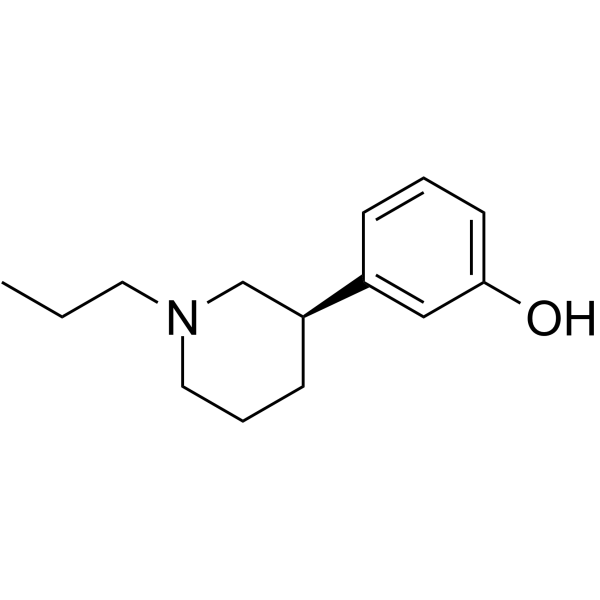
-
- HY-121775
-
|
|
Dopamine Receptor
|
Neurological Disease
|
|
F-00217830 is an agonist ofDopamine D2 receptor. PF-00217830 inhibits of spontaneous locomotor activity and 2,5-dimethoxy-4-iodoamphetamine-induced head twitches in rats .
|
-

-
- HY-145454A
-
|
(-)-3-PPP
|
Dopamine Receptor
|
Neurological Disease
|
|
Preclamol is a dopamine (DA) agonist with autoreceptor as well as postsynaptic receptor stimulatory properties. Preclamol inhibits the locomotor activity of mice and rats in low doses .
|
-
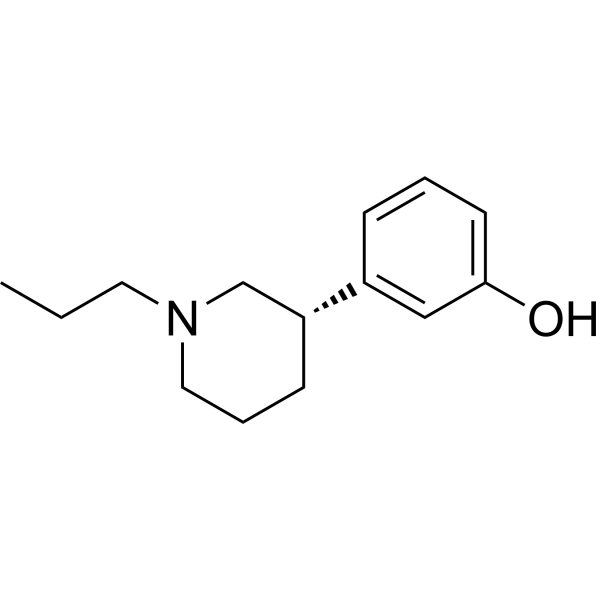
-
- HY-118461
-
|
|
Dopamine Receptor
|
Neurological Disease
|
|
PD 120697 is an orally active dopamine (DA) agonist. PD 120697 inhibits striatal DA synthesis, DA neuronal firing, spontaneous locomotor activity, and reverses Reserpine (HY-N0480)-induced depression .
|
-
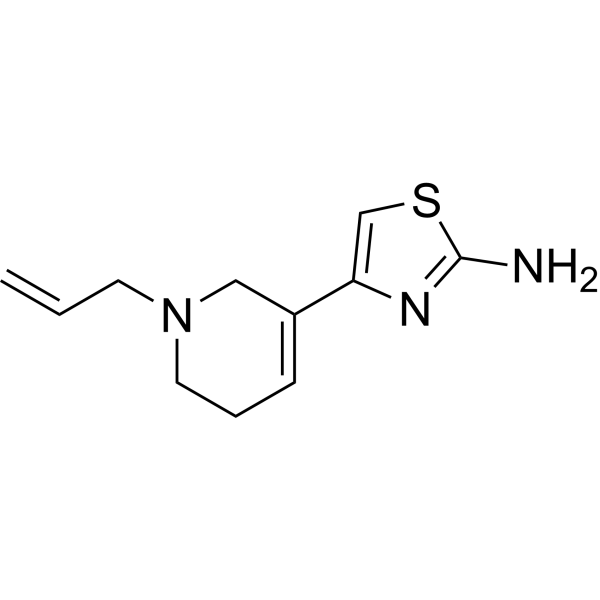
-
- HY-100998
-
|
|
Others
|
Neurological Disease
|
|
Metaphit is a specific PCPantagonist and site-directed acylating agent of the [3H]phencyclidine binding site in rat brain homogenates . Metaphit prevents PCP-induced locomotor behavior through presynaptic mechanisms .
|
-
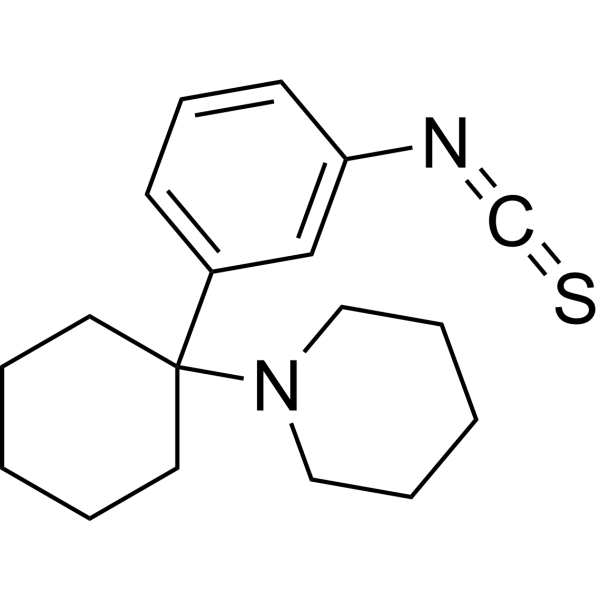
-
- HY-P1329
-
|
|
Opioid Receptor
|
Neurological Disease
|
|
CTOP is a potent and highly selective μ-opioid receptor antagonist. CTOP antagonizes the acute morphine-induced analgesic effect and hypermotility. CTOP enhances extracellular dopamine levels in the nucleus accumbens. CTOP dose-dependently enhances locomotor activity .
|
-

-
- HY-P1329A
-
|
|
Opioid Receptor
|
Neurological Disease
|
|
CTOP TFA is a potent and highly selective μ-opioid receptor antagonist. CTOP TFA antagonizes the acute analgesic effect and hypermotility. CTOP TFA enhances extracellular dopamine levels in the nucleus accumbens. CTOP TFA dose-dependently enhances locomotor activity .
|
-

-
- HY-10895
-
|
SB 334867A
|
Orexin Receptor (OX Receptor)
|
Neurological Disease
Endocrinology
|
|
SB-334867 (SB 334867A) is an excellent,selective and blood–brain barrier permeable orexin-1 (OX1) receptor antagonist, shows selectivity over OX2 (pKb=7.4), 100-fold over 5-HT2B, 5-HT2C with pKi values of 5.4 and 5.3, respectively . SB-334867 reduces ethanol consumption and inhibits the acquisition of morphine-induced sensitization to locomotor activity in vivo .
|
-
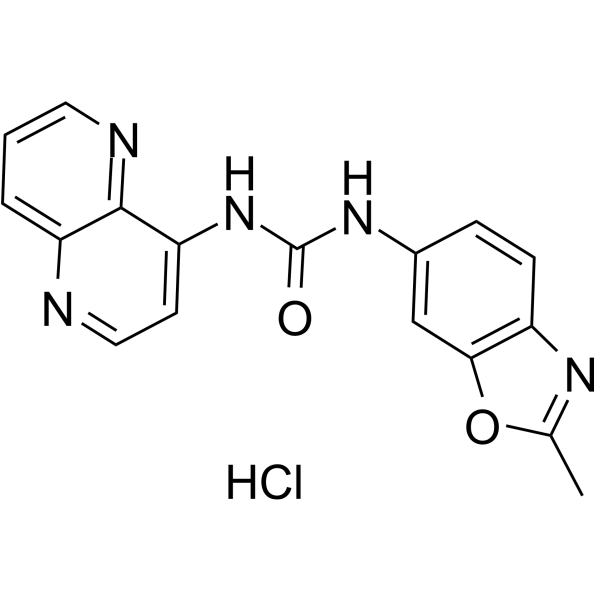
-
- HY-10895A
-
|
SB334867A free base
|
Orexin Receptor (OX Receptor)
|
Neurological Disease
Endocrinology
|
|
SB-334867 free base (SB334867A free base) is an excellent, selective and blood–brain barrier permeable orexin-1 (OX1) receptor antagonist, shows selectivity over OX2 (pKb=7.4), 100-fold over 5-HT2B, 5-HT2C with pKi values of 5.4 and 5.3, respectively . SB-334867 reduces ethanol consumption and inhibits the acquisition of morphine-induced sensitization to locomotor activity in vivo .
|
-
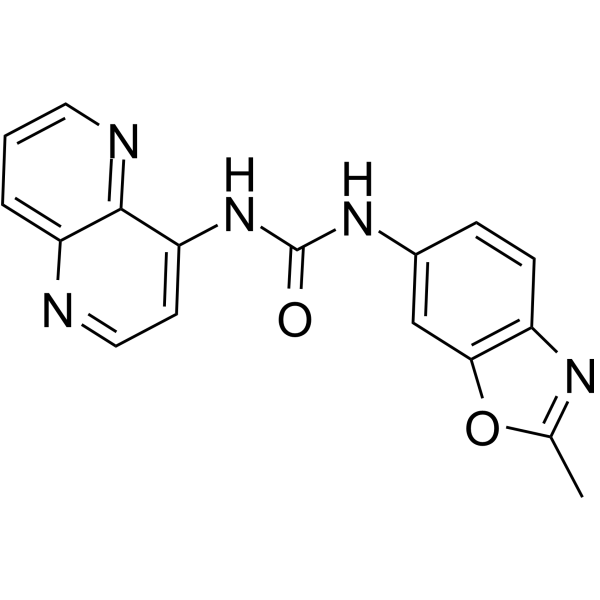
-
- HY-103429
-
|
LY163502
|
Dopamine Receptor
|
Neurological Disease
|
|
Quinelorane dihydrochloride (LY163502) is a potent dopamine D3/D2 receptor agonist. Quinelorane has the potential for neurological and psychiatric disorders research .
|
-
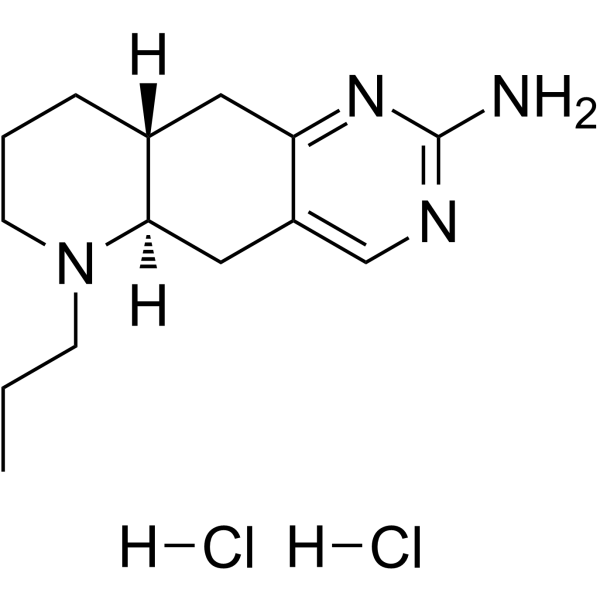
-
- HY-118402
-
|
|
Dopamine Receptor
|
Neurological Disease
|
|
PD 119819 is a highly selective benzopyran-4-one brain dopamine autoreceptor agonist. PD 119819, a heterocyclic piperazine, inhibits spontaneous locomotor activity and brain dopamine synthesis .
|
-
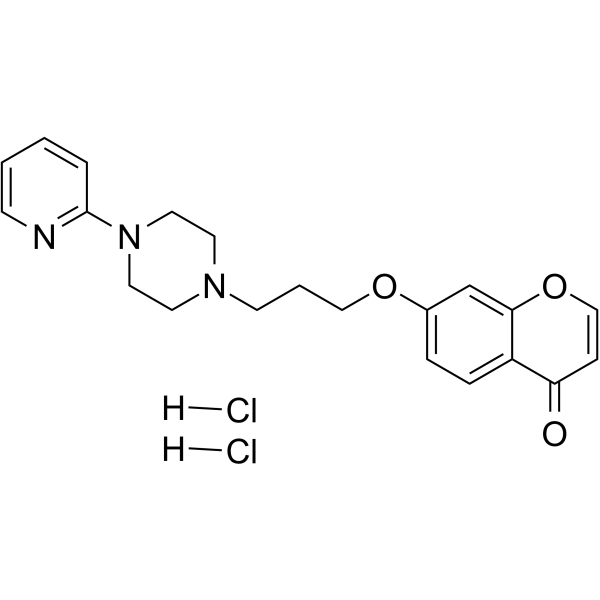
-
- HY-15451
-
MDA 19
1 Publications Verification
|
Cannabinoid Receptor
|
Neurological Disease
|
|
MDA 19 is a potent and selective agonist of human cannabinoid receptor 2 (CB2), with a Ki of 43.3 nM. MDA 19 has antiallodynic effects in a rat model of neuropathic pain and does not affect rat locomotor activity .
|
-

-
- HY-W015616
-
|
4-Penylbutan-2-one
|
Tyrosinase
|
Metabolic Disease
|
|
Benzylacetone is an aromatic compound from agarwood . Benzylacetone exhibits potent and reversible antityrosinase (mushroom) activity, with IC50s of 2.8 mM and 0.6 mM for monophenolase and diphenolase, respectively . Benzylacetone has appetite-enhancing and locomotor-reducing effects .
|
-
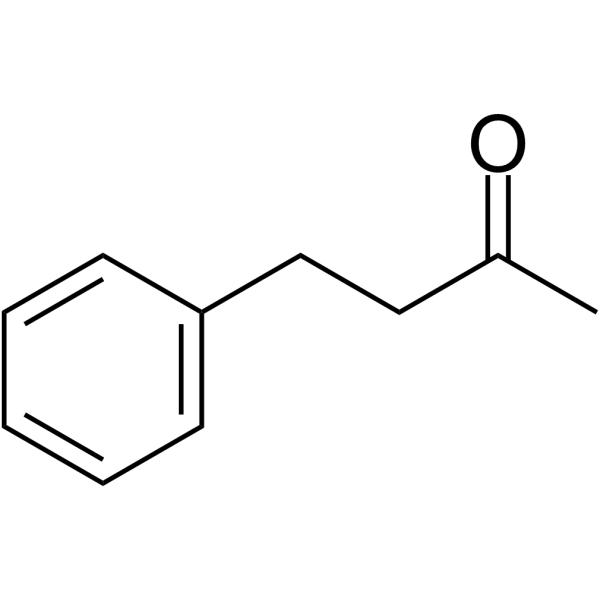
-
- HY-133533
-
|
|
Cannabinoid Receptor
|
Neurological Disease
|
|
O-2050 is a high affinity cannabinoid CB1 receptor antagonist with a Ki of 2.5 nM. O-2050 inhibits cannabinoid CB2 receptor (Ki=0.2 nM). O-2050 can cause locomotor stimulation in mice .
|
-

-
- HY-107055
-
|
|
Dopamine Transporter
|
Neurological Disease
|
|
RTI 336 is a phenyltropane analog, as well as a potent and selective dopamine transporter (DAT) inhibitor. RTI 336 inhibits addictive agent induced locomotor activity and self-administration in Lewis rats. RTI 336 exhibits inhibitory effects depending on inherent NAc DAT levels .
|
-
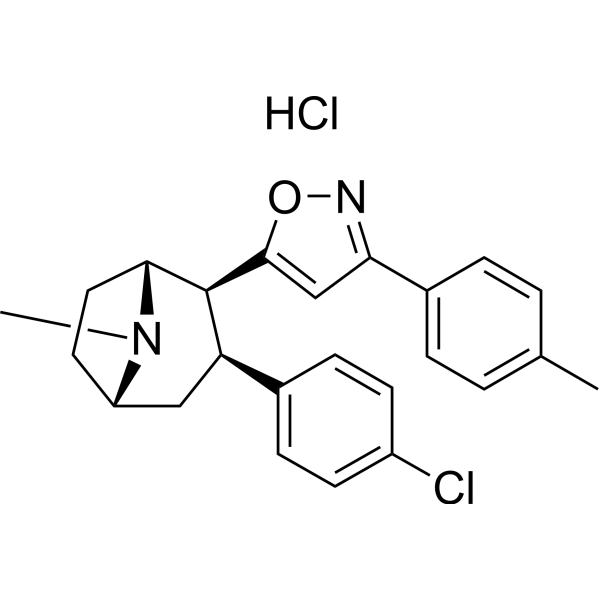
-
- HY-B1002
-
|
|
Bacterial
Antibiotic
DNA/RNA Synthesis
|
Infection
|
|
Oxolinic acid is an antibiotic against both Gram-negative and Gram-positive bacteria. Oxolinic acid can be used for the research of acute and chronic urinary tract infections. Oxolinic acid is a DNA/RNA synthesis inhibitor. Oxolinic acid acts a dopamine uptake inhibitor and stimulants locomotor effect in mice .
|
-
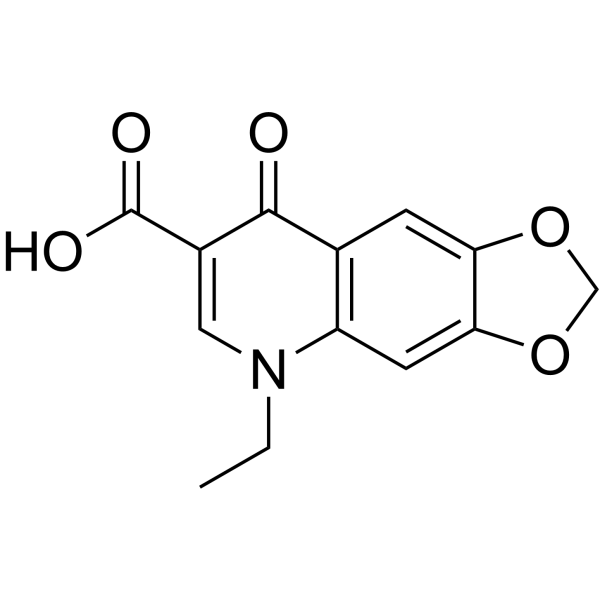
-
- HY-P1438A
-
|
|
Neuropeptide Y Receptor
|
|
|
Neuropeptide S(Rat) TFA is a potent endogenous neuropeptide S receptor (NSPR) agonist (EC50=3.2 nM). Neuropeptide S(Rat) TFA increases locomotor activity and wakefulness in mice. Neuropeptide S(Rat) TFA also reduces anxiety-like behavior in mice.
|
-
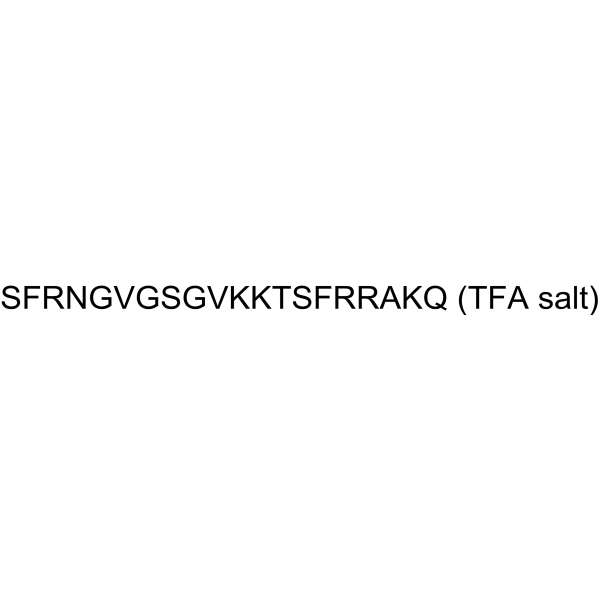
-
- HY-108510
-
|
BW 234U dihydrochloride
|
Sigma Receptor
Dopamine Receptor
|
Neurological Disease
Cancer
|
|
Rimcazole (BW 234U) dihydrochloride is a carbazole derivative that acts in part as a sigma (σ) receptor antagonist. Rimcazole dihydrochloride also binds with moderate affinity to the dopamine transporter and inhibit dopamine uptake. Rimcazole dihydrochloride can reduce locomotor activity and sensitization. Rimcazole dihydrochloride also can be used for the research of cancer .
|
-
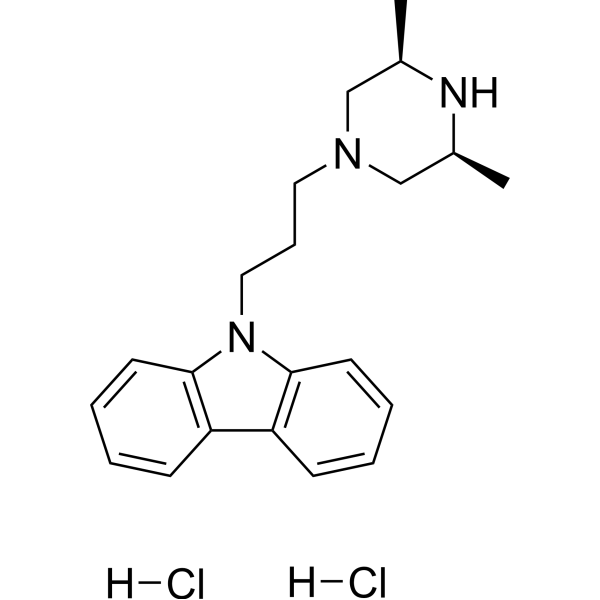
-
- HY-107696
-
-
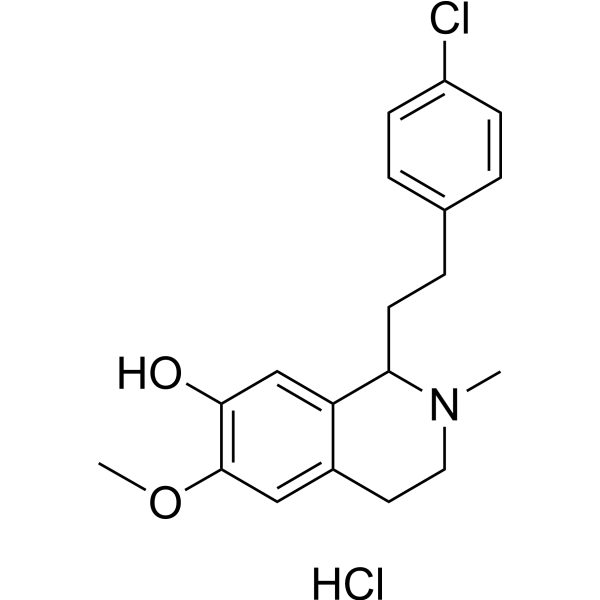
-
- HY-125043
-
-

-
- HY-P1437A
-
|
|
Neuropeptide Y Receptor
|
|
|
Neuropeptide S(Mouse) TFA is a potent endogenous neuropeptide S receptor (NPSR) agonist (EC50=3 nM). Neuropeptide S(Mouse) TFA induces mobilization of intracellular Ca 2+. Neuropeptide S(Mouse) TFA increases locomotor activity and wakefulness in mice. Neuropeptide S(Mouse) TFA also reduces anxiety-like behavior in mice.
|
-
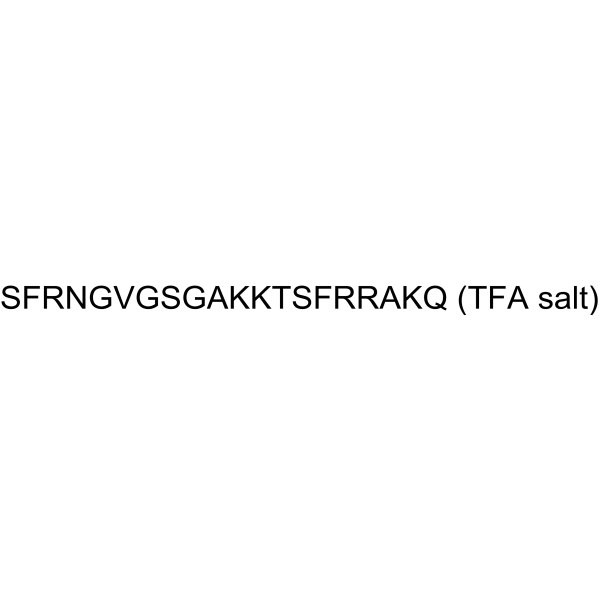
-
- HY-B1002S
-
|
|
Bacterial
Antibiotic
DNA/RNA Synthesis
|
Infection
|
|
Oxolinic acid-d5 is the deuterium labeled Oxolinic acid. Oxolinic acid is an antibiotic against both Gram-negative and Gram-positive bacteria. Oxolinic acid can be used for the research of acute and chronic urinary tract infections. Oxolinic acid is a DNA/RNA synthesis inhibitor. Oxolinic acid acts a dopamine uptake inhibitor and stimulants locomotor effect in mice[1][2][3].
|
-
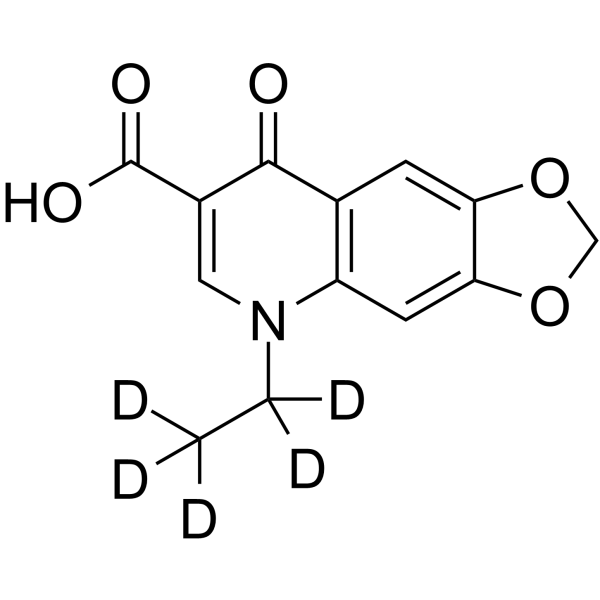
-
- HY-B1002R
-
|
|
Bacterial
Antibiotic
DNA/RNA Synthesis
|
Infection
|
|
Oxolinic acid (Standard) is the analytical standard of Oxolinic acid. This product is intended for research and analytical applications. Oxolinic acid is an antibiotic against both Gram-negative and Gram-positive bacteria. Oxolinic acid can be used for the research of acute and chronic urinary tract infections. Oxolinic acid is a DNA/RNA synthesis inhibitor. Oxolinic acid acts a dopamine uptake inhibitor and stimulants locomotor effect in mice .
|
-
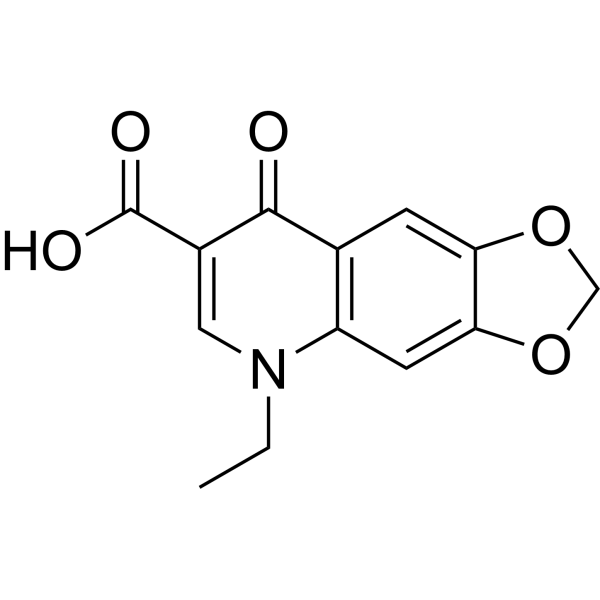
-
- HY-136569
-
|
|
Phosphodiesterase (PDE)
|
Neurological Disease
|
|
DSR-141562 is a novel, orally active, and selective brain-penetrant phosphodiesterase 1 (PDE1) inhibitor. DSR-141562 shows preferential selectivity for human PDE1B with an IC50 of 43.9 nM, and the IC50 values for human PDE1A and 1C are 97.6 and 431.8 nM, respectively. DSR-141562 can be used for the study of positive symptoms, negative symptoms and cognitive impairments associated with schizophrenia .
|
-
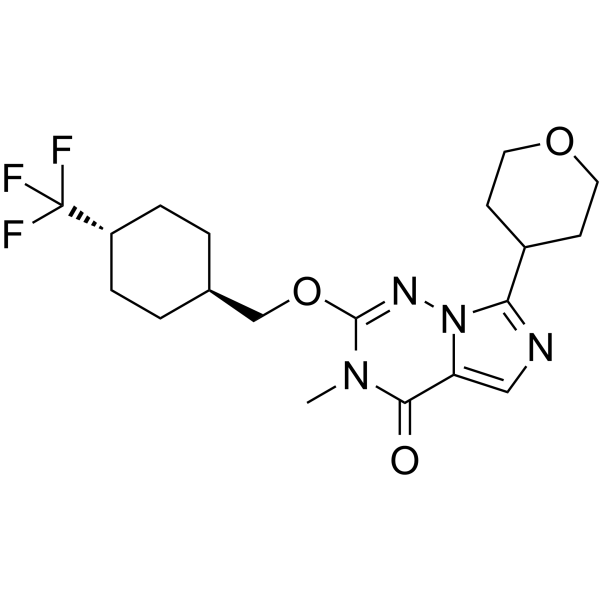
-
- HY-P1301
-
|
|
Opioid Receptor
|
Neurological Disease
|
|
[Arg14,Lys15]Nociceptin is a highly potent and selective NOP receptor (ORL1; OP4) agonist, with an EC50 of 1 nM. [Arg14,Lys15]Nociceptin displays high selectivity over opioid receptors, with IC50s of 0.32, 280, >10000 and 1500 nM for NOP, μ, δ and κ receptors, respectively .
|
-
![[Arg14,Lys15]Nociceptin](//file.medchemexpress.com/product_pic/hy-p1301.gif)
-
- HY-P1301A
-
|
|
Opioid Receptor
|
Neurological Disease
|
|
[Arg14,Lys15]Nociceptin TFA is a highly potent and selective NOP receptor (ORL1; OP4) agonist, with an EC50 of 1 nM. [Arg14,Lys15]Nociceptin TFA displays high selectivity over opioid receptors, with IC50s of 0.32, 280, >10000 and 1500 nM for NOP, μ, δ and κ receptors, respectively .
|
-
![[Arg14,Lys15]Nociceptin TFA](//file.medchemexpress.com/product_pic/hy-p1301a.gif)
-
- HY-102062
-
|
N-omega-Propyl-L-arginine
|
NO Synthase
|
Neurological Disease
|
|
Nω-Propyl-L-arginine (N-omega-Propyl-L-arginine) is a potent, competitive, and highly selective inhibitor of neuronal nitric oxide synthase (nNOS), with a Ki of 57 nM. Nω-Propyl-L-arginine displays a 149-fold selectivity for nNOS over endothelial NOS (eNOS) .
|
-
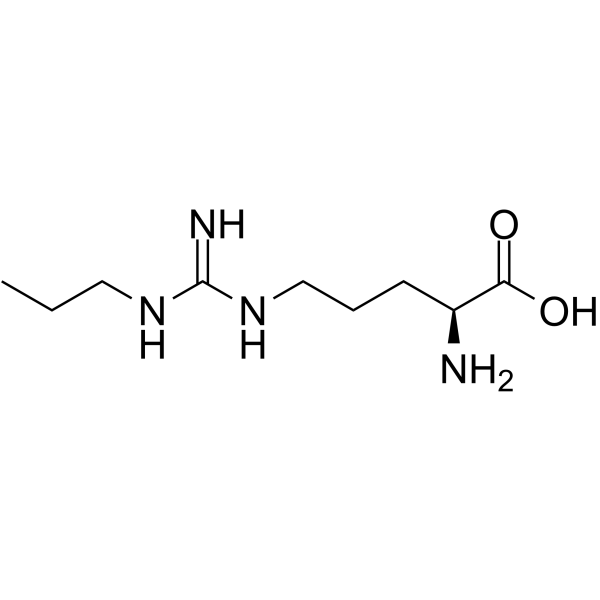
-
- HY-102062A
-
|
N-omega-Propyl-L-arginine hydrochloride
|
NO Synthase
|
Neurological Disease
|
|
Nω-Propyl-L-arginine (N-omega-Propyl-L-arginine) hydrochloride is a potent, competitive, and highly selective inhibitor of neuronal nitric oxide synthase (nNOS), with a Ki of 57 nM. Nω-Propyl-L-arginine hydrochloride displays a 149-fold selectivity for nNOS over endothelial NOS (eNOS) .
|
-

-
- HY-16361A
-
|
CGP3466B; CGP3446 maleate; TCH346 maleate
|
|
|
|
Omigapil maleate, an orally bioavailable GAPDH nitrosylation inhibitor, abrogates Aβ1-42-induced tau acetylation, memory impairment, and locomotor dysfunction in mice. Omigapil maleate has the potential for the research of Alzheimer's disease . Omigapil maleate (CGP3446B maleate) is a apoptosis inhibitor. Omigapil maleate can be used for the research of congenital muscular dystrophy (CMD) . Omigapil (maleate) is a click chemistry reagent, it contains an Alkyne group and can undergo copper-catalyzed azide-alkyne cycloaddition (CuAAc) with molecules containing Azide groups.
|
-
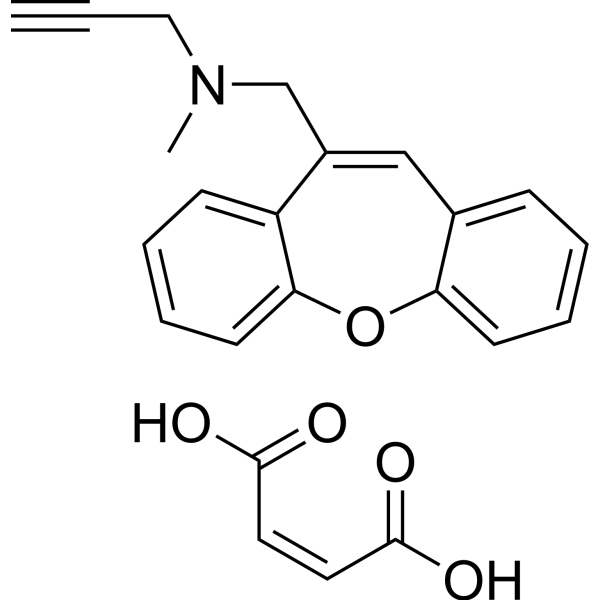
-
- HY-14611
-
|
DFB
|
mGluR
|
Neurological Disease
|
|
3,3'-Difluorobenzaldazine (DFB) is a selective positive allosteric modulator of mGluR5. 3,3'-Difluorobenzaldazine potentiates 3- to 6-fold action for mGlu5 agonists (Glutamate, Quisqualate, and 3,5-Dihydroxyphenylglycine), with EC50s in the 2 to 5 μM range .
|
-
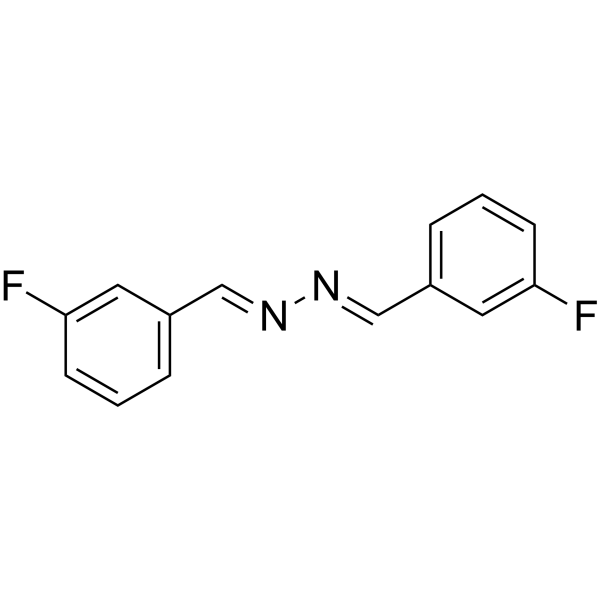
-
- HY-107751
-
-

-
- HY-103565
-
|
|
mGluR
|
Neurological Disease
|
|
AMN082, a selective, orally active, and brain penetrant mGluR7 agonist, directly activates receptor signaling via an allosteric site in the transmembrane domain. AMN082 potently inhibits cAMP accumulation and stimulates GTPγS binding (EC50 values, 64-290 nM) at transfected mammalian cells expressing mGluR7. AMN082 shows selectivity over other mGluR subtypes and selected ionotropic glutamate receptors. Antidepressant effects .
|
-
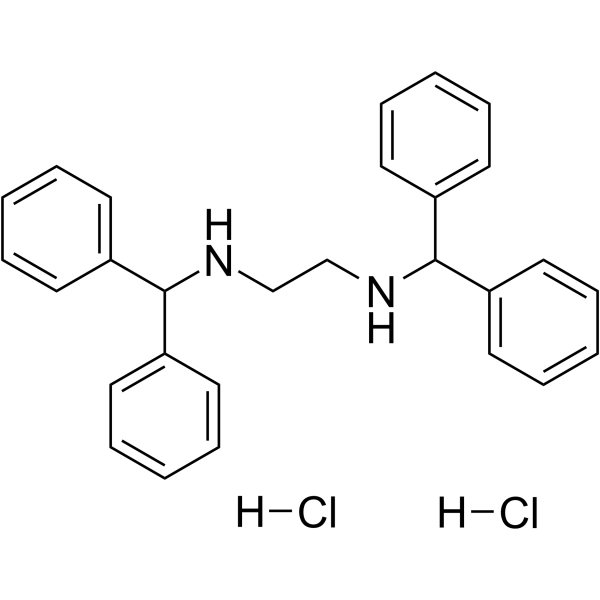
-
- HY-P1318
-
|
|
Opioid Receptor
|
Neurological Disease
|
|
Ac-RYYRIK-NH2 is a potent and partial agonist on ORL1 transfected in CHO cells (Kd=1.5 nM) and behaves as a endogenous ligand of ORL1. Ac-RYYRIK-NH2 is a specific antagonist for the activation of G protein and competitively antagonizes the stimulation of [ 35S]-GTPgS binding to G proteins by nociceptin/orphanin FQ (noc/OFQ) in membranes and sections of rat brain .
|
-

-
- HY-P1318A
-
|
|
Opioid Receptor
|
Neurological Disease
|
|
Ac-RYYRIK-NH2 TFA is a potent and partial agonist on ORL1 transfected in CHO cells (Kd=1.5 nM) and behaves as a endogenous ligand of ORL1. Ac-RYYRIK-NH2 is a specific antagonist for the activation of G protein and competitively antagonizes the stimulation of [ 35S]-GTPgS binding to G proteins by nociceptin/orphanin FQ (noc/OFQ) in membranes and sections of rat brain .
|
-

-
- HY-103565A
-
|
|
mGluR
|
Neurological Disease
|
|
AMN082 free base, a selective, orally active, and brain penetrant mGluR7 agonist, directly activates receptor signaling via an allosteric site in the transmembrane domain. AMN082 free base potently inhibits cAMP accumulation and stimulates GTPγS binding (EC50 values, 64-290 nM) at transfected mammalian cells expressing mGluR7. AMN082 free base shows selectivity over other mGluR subtypes and selected ionotropic glutamate receptors. Antidepressant effects .
|
-
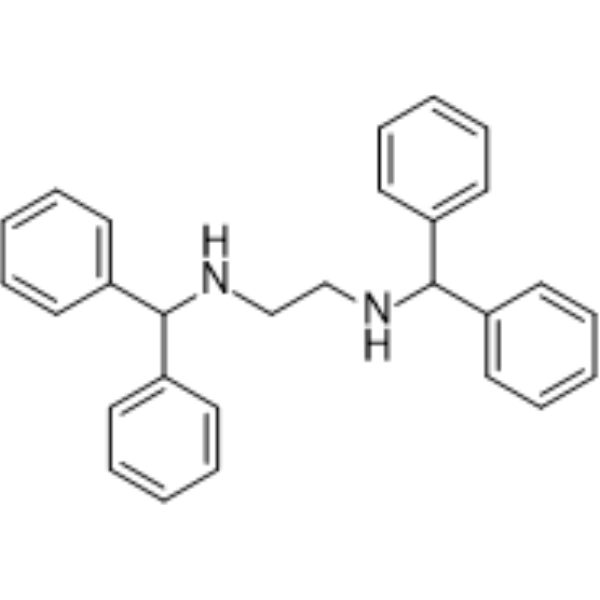
-
- HY-149247
-
|
|
5-HT Receptor
Dopamine Receptor
|
Neurological Disease
|
|
Antipsychotic agent-2 (Compound 11) is a potent antipsychotic agent. Antipsychotic agent-2 shows affinities for 5-HT1A, 5-HT2A, 5-HT2C, D2 and H1 receptors with Kis of 56.6, 66.7, 552, 596 and 1140 nM, respectively. Antipsychotic agent-2 has BBB permeability .
|
-
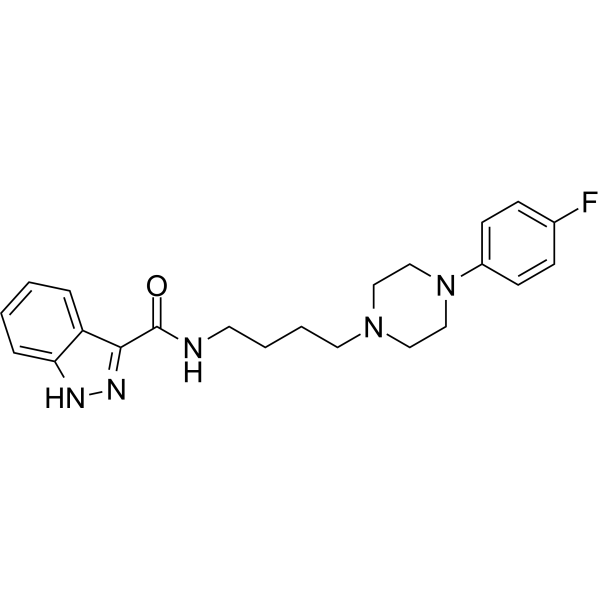
-
- HY-12707
-
-
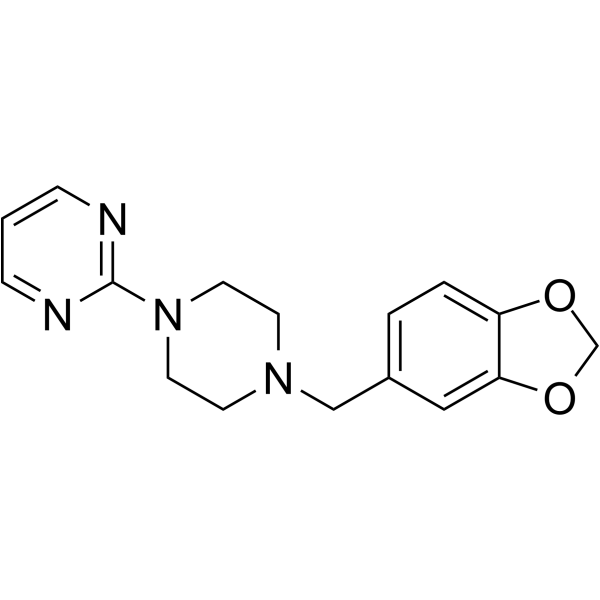
-
- HY-12707C
-
-
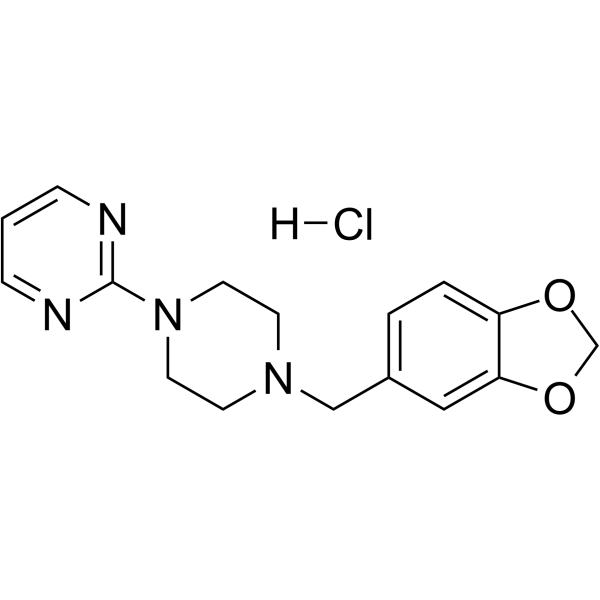
-
- HY-117408
-
|
|
mAChR
|
Neurological Disease
|
|
VU6004256 is a potent and selective M1 muscarinic positive allosteric modulator (PAM) with an EC50 value of 155 nM. VU6004256 has the potential for the research of schizophrenia .
|
-
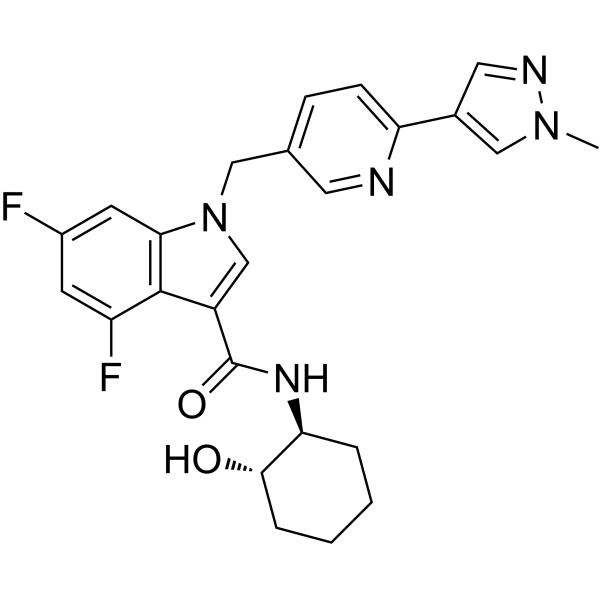
-
- HY-N2707
-
|
|
Reactive Oxygen Species
|
Neurological Disease
Cancer
|
|
6-Deoxyjacareubin is a natural xanthone, that can be isolated from the leaves of Vismia latifolia. 6-Deoxyjacareubin protects against non-apoptotic cell death by inhibiting ROS production. 6-Deoxyjacareubin ameliorates neurodegeneration in a mouse model of familial amyotrophic lateral sclerosis (ALS) .
|
-
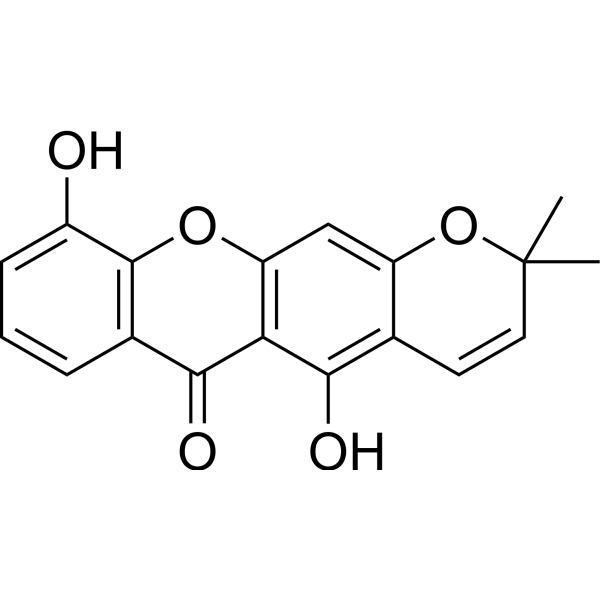
| Cat. No. |
Product Name |
Target |
Research Area |
-
- HY-P1329A
-
|
|
Opioid Receptor
|
Neurological Disease
|
|
CTOP TFA is a potent and highly selective μ-opioid receptor antagonist. CTOP TFA antagonizes the acute analgesic effect and hypermotility. CTOP TFA enhances extracellular dopamine levels in the nucleus accumbens. CTOP TFA dose-dependently enhances locomotor activity .
|
-
- HY-P3819
-
|
DSIP-P
|
Peptides
|
Neurological Disease
|
|
Delta (Phospho) Sleep Inducing Peptide (DSIP-P) is a long-lasting sleep-promoting peptide. Delta (Phospho) Sleep Inducing Peptide induces changes in the circadian locomotor behavior in rats .
|
-
- HY-P3568
-
|
Grybi-AKH
|
Peptides
|
Metabolic Disease
|
|
Adipokinetic hormone Gryllus bimaculatus (Grybi-AKH) is an adipokinetic hormone that regulates energy homeostasis in insects by mobilizing lipid and carbohydrate from the fat body. Adipokinetic hormone Gryllus bimaculatus stimulates the locomotor activity of the two-spotted cricket. Adipokinetic hormone Gryllus bimaculatus can also be used in studies to regulate body weight, induce weight loss and alleviate glycogen storage disorders in humans .
|
-
- HY-P1329
-
|
|
Opioid Receptor
|
Neurological Disease
|
|
CTOP is a potent and highly selective μ-opioid receptor antagonist. CTOP antagonizes the acute morphine-induced analgesic effect and hypermotility. CTOP enhances extracellular dopamine levels in the nucleus accumbens. CTOP dose-dependently enhances locomotor activity .
|
-
- HY-P1438A
-
|
|
Neuropeptide Y Receptor
|
|
|
Neuropeptide S(Rat) TFA is a potent endogenous neuropeptide S receptor (NSPR) agonist (EC50=3.2 nM). Neuropeptide S(Rat) TFA increases locomotor activity and wakefulness in mice. Neuropeptide S(Rat) TFA also reduces anxiety-like behavior in mice.
|
-
- HY-P1437A
-
|
|
Neuropeptide Y Receptor
|
|
|
Neuropeptide S(Mouse) TFA is a potent endogenous neuropeptide S receptor (NPSR) agonist (EC50=3 nM). Neuropeptide S(Mouse) TFA induces mobilization of intracellular Ca 2+. Neuropeptide S(Mouse) TFA increases locomotor activity and wakefulness in mice. Neuropeptide S(Mouse) TFA also reduces anxiety-like behavior in mice.
|
-
- HY-P1301
-
|
|
Opioid Receptor
|
Neurological Disease
|
|
[Arg14,Lys15]Nociceptin is a highly potent and selective NOP receptor (ORL1; OP4) agonist, with an EC50 of 1 nM. [Arg14,Lys15]Nociceptin displays high selectivity over opioid receptors, with IC50s of 0.32, 280, >10000 and 1500 nM for NOP, μ, δ and κ receptors, respectively .
|
-
- HY-P1301A
-
|
|
Opioid Receptor
|
Neurological Disease
|
|
[Arg14,Lys15]Nociceptin TFA is a highly potent and selective NOP receptor (ORL1; OP4) agonist, with an EC50 of 1 nM. [Arg14,Lys15]Nociceptin TFA displays high selectivity over opioid receptors, with IC50s of 0.32, 280, >10000 and 1500 nM for NOP, μ, δ and κ receptors, respectively .
|
-
- HY-P1318
-
|
|
Opioid Receptor
|
Neurological Disease
|
|
Ac-RYYRIK-NH2 is a potent and partial agonist on ORL1 transfected in CHO cells (Kd=1.5 nM) and behaves as a endogenous ligand of ORL1. Ac-RYYRIK-NH2 is a specific antagonist for the activation of G protein and competitively antagonizes the stimulation of [ 35S]-GTPgS binding to G proteins by nociceptin/orphanin FQ (noc/OFQ) in membranes and sections of rat brain .
|
-
- HY-P1318A
-
|
|
Opioid Receptor
|
Neurological Disease
|
|
Ac-RYYRIK-NH2 TFA is a potent and partial agonist on ORL1 transfected in CHO cells (Kd=1.5 nM) and behaves as a endogenous ligand of ORL1. Ac-RYYRIK-NH2 is a specific antagonist for the activation of G protein and competitively antagonizes the stimulation of [ 35S]-GTPgS binding to G proteins by nociceptin/orphanin FQ (noc/OFQ) in membranes and sections of rat brain .
|
| Cat. No. |
Product Name |
Target |
Research Area |
-
- HY-P99959
-
|
MT-3921; rH116A3
|
Inhibitory Antibodies
|
Neurological Disease
|
|
Unasnemab (MT-3921) is a humanised IgG1 monoclonal antibody that binds to repulsive guidance molecule A (RGMa). Unasnemab improves locomotor function and promotes neuroregeneration and can be used for the research of spinal cord injury .
|
| Cat. No. |
Product Name |
Category |
Target |
Chemical Structure |
| Cat. No. |
Product Name |
Chemical Structure |
-
- HY-B1002S
-
|
|
|
Oxolinic acid-d5 is the deuterium labeled Oxolinic acid. Oxolinic acid is an antibiotic against both Gram-negative and Gram-positive bacteria. Oxolinic acid can be used for the research of acute and chronic urinary tract infections. Oxolinic acid is a DNA/RNA synthesis inhibitor. Oxolinic acid acts a dopamine uptake inhibitor and stimulants locomotor effect in mice[1][2][3].
|
-

Your information is safe with us. * Required Fields.
Inquiry Information
- Product Name:
- Cat. No.:
- Quantity:
- MCE Japan Authorized Agent:






























![[Arg14,Lys15]Nociceptin](http://file.medchemexpress.com/product_pic/hy-p1301.gif)
![[Arg14,Lys15]Nociceptin TFA](http://file.medchemexpress.com/product_pic/hy-p1301a.gif)
















